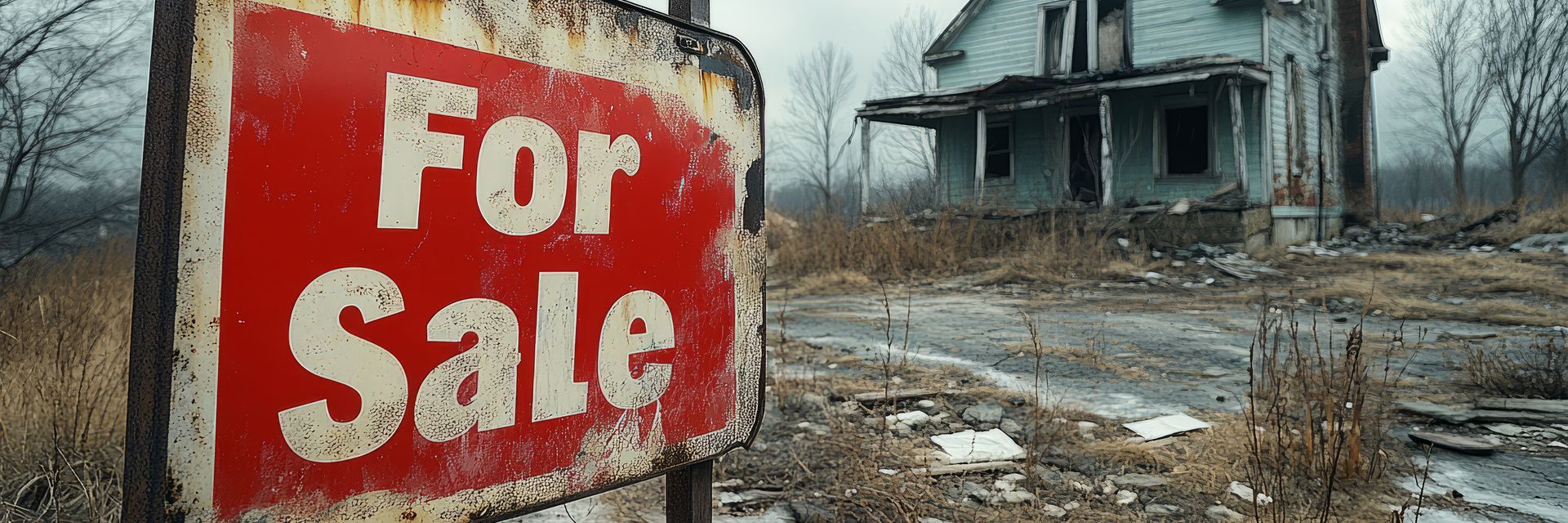What is the fate of a house where an unspeakable act unfolds?
◊
“You want a physicist to speak at your funeral. You want the physicist to talk to your grieving family about the conservation of energy, so they will understand that your energy has not died,” writes physicist Aaron Freeman. “You want the physicist to remind your sobbing mother about the first law of thermodynamics; that no energy gets created in the universe, and none is destroyed.”
Freeman has a poignant and compelling point. What if energy includes not just movement of matter, the pull of the tides, or the construction of buildings? Maybe energy includes less tangible forces, like human emotion, the charge of personality, profound loss, or fear. And maybe it’s more than a trope that tragic events leave ripples in their wakes.
There’s a colloquial term for the houses that become unwilling backdrops for violent crime: murder houses.
What happens to these homes in the aftermath of such events? Are they, like many of the perpetrators who committed crimes in their bedrooms, basements, and hallways, irredeemable?
Investigate the chilling story of a family that disappeared in this riveting MagellanTV documentary.
10050 Cielo Drive: The Manson Murders
On August 9, 1969, a bucolic cottage in Beverly Hills, California, became the setting for one of the most horrifying crimes of the 20th century – one that, in hindsight, has come to symbolize the devolution of the loving spirit of the American 1960s. The renters of the cottage at 10050 Cielo Drive would be well-recognized at the time: Roman Polansky, a famed, if troubled, filmmaker, and his wife, Sharon Tate, a budding actress.
On that summer night, Roman was away. That left Sharon, who was pregnant, and several of her acquaintances: Jay Sebring, Voytek Fryowski, Abigail Folger, and Steven Parent. They could not have known that four strangers were creeping through the California darkness. They were Charles “Tex” Watson, Susan Atkins, Patricia Krenwinkel, and Linda Kasabian. The one who wasn’t present, of course, was the mastermind who’d sent his minions on the murderous mission.
Manson knew the previous residents of the home, music producer Terry Melcher and his girlfriend, actress Candice Bergen, and it's been rumored that they were the intended victims; evidence suggests Manson was aware of their departure, however, leaving questions as to why the Manson family targeted the house.
The murders are stitched into the tapestry of Hollywood lore, not only because of the victims, but because of the unlikely culprits, who went on to murder supermarket executive Leno LaBianca and his wife, Rosemary the following night. Their motivations appeared inexplicable; it seemed only true evil, spawned by a malevolent leader, could account for such violence.
With all the news coverage of the murders, it’s hard to imagine anyone wouldn’t have heard the name “Manson,” or that most Angelinos wouldn't recognize the house where the crimes occurred.

Sharon Tate (Source: Eye Magazine, via Wikimedia Commons)
The owner of 10050 Cielo Drive, Rudi Altobelli, finding it difficult to re-rent the abode, blamed his former tenants. He sued Polanski and Life magazine for allowing crime scene photos to be published, claiming that the images impacted the home’s resale value. Altobelli even filed a lawsuit against Tate’s estate for damages to the property and for Altobelli’s psychological distress.
While Altobelli may have been litigiously opportunistic, was he wrong to suggest that the house’s value suffered due to the events that unfolded there?
Randall Bell is CEO of Landmark Research Group, which specializes in damaged or “stigmatized” real estate – in other words, “a property that has been psychologically impacted by an event, such as a crime, death, or paranormal activity, that occurred on the property, making it less desirable to potential buyers.” According to Realtor.com, your average murder home typically sells for 10–25 percent less than market value, more if the home was the site of a child’s death. In a 2024 interview with Architectural Digest, Bell discussed who typically buys these properties. “There’s a lot of people who have a macabre interest [in murder houses], but I don’t really see people particularly buying these homes because of their fascination with crime; it’s more that they’re getting a discount,” Bell said. “And life moves on.”
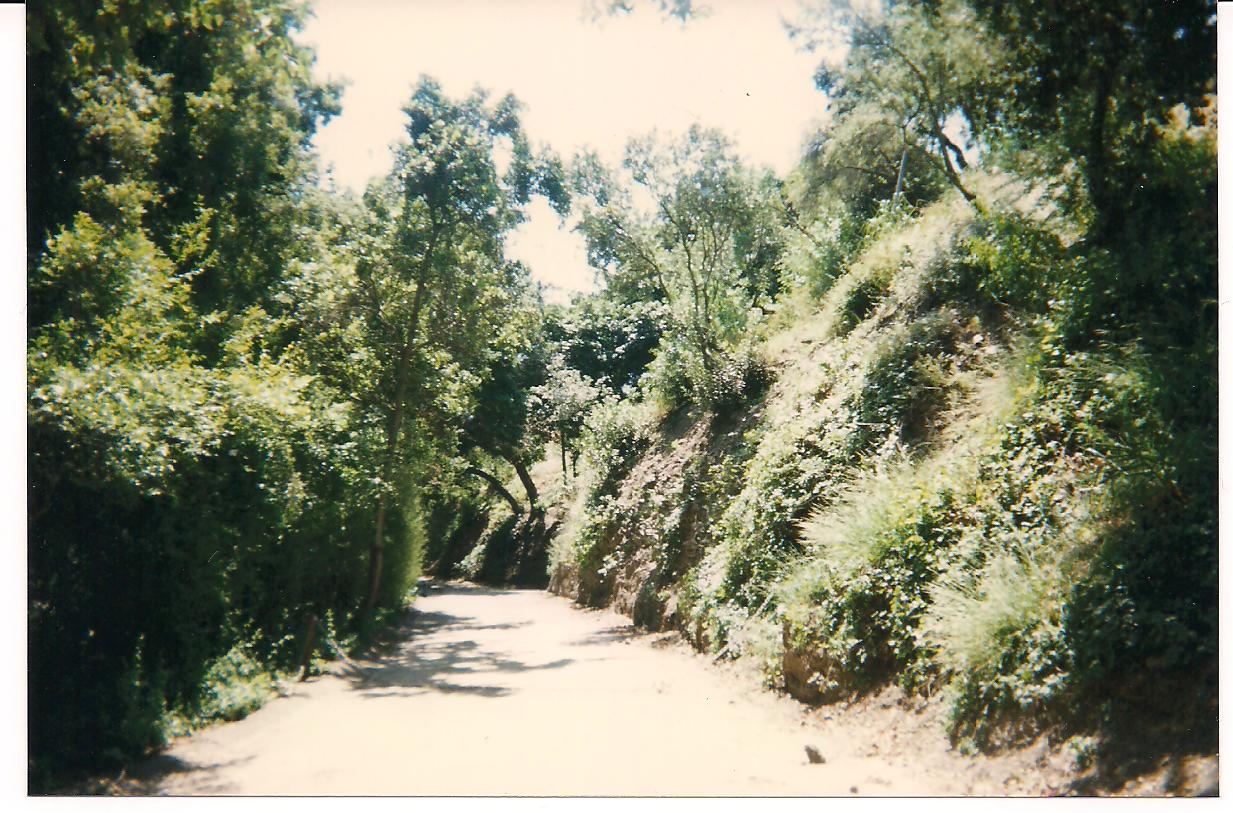 A section of Cielo Drive in Benedict Canyon, near Beverly Hills, California (Source: Wikimedia Commons)
A section of Cielo Drive in Benedict Canyon, near Beverly Hills, California (Source: Wikimedia Commons)
In the case of 10050 Cielo Drive, Altobelli lived there for years before selling it. In the 1990s, Trent Reznor of the band Nine Inch Nails became the last person to live in the house, recording his album Downward Spiral there. He claims he only learned about the home’s history after moving in. At one point he was confronted by Tate’s sister, who questioned his motivations. “She said: ‘Are you exploiting my sister’s death by living in her house?’” Reznor told Rolling Stone in a 1997 interview. “For the first time the whole thing kind of slapped me in the face. . . . She lost her sister from a senseless, ignorant situation that I don’t want to support.”
In 1994, the house at 10050 Cielo Drive was demolished, albeit without its notorious front door where the Mansons wrote the word “Pig” in Tate’s blood. Reznor took it with him before leaving, installing it at his recording studio in New Orleans. The door has since been sold at auction.
The Amityville House
On the evening of November 13, 1974, a scruffy 23-year-old man entered Henry’s Bar in Amityville on Long Island, New York, pleading with patrons, “You got to help me! I think my mother and father are [sic] shot!” The man was Ronald DeFeo, Jr.
After police were called to a three-story Dutch colonial at 112 Ocean Avenue, all six members of the DeFeo family – Ronald’s parents, Ronald Sr. and Louise, as well as Ronald Jr.’s siblings Dawn (18), Allison (13), Marc (12), and John (9) – were discovered shot in their beds.
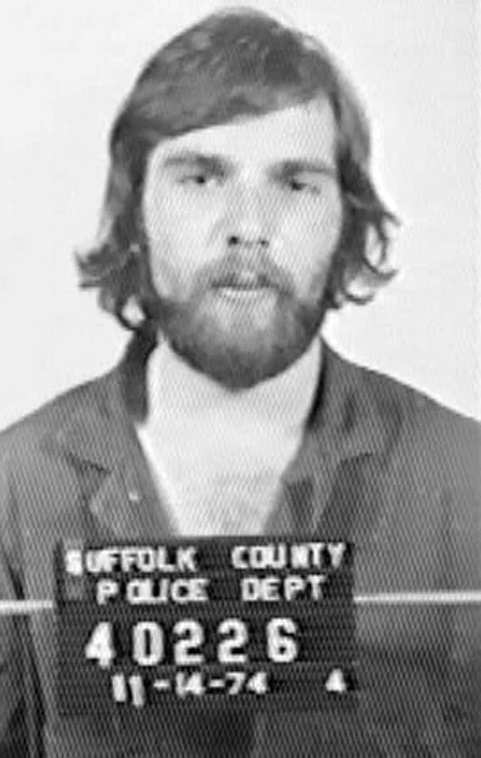
Ronald DeFeo, Jr.’s mugshot (Source: Suffolk County Police Department, via Wikimedia Commons)
In the beginning, DeFeo told police that his family had been killed by mob hitman Louis Falini. The family did have a connection to the Genovese crime family, but Falini had an alibi. DeFeo soon confessed to the familicide, telling detectives: “Once I started, I just couldn’t stop. It went so fast.”
The motive for the murders was never concretely established, although the promise of insurance money may have played a role. DeFeo’s attorneys argued an insanity defense, citing DeFeo’s drug use and antisocial personality disorder. But Judge Thomas Stark determined that DeFeo was cognizant of his actions and called the killings, “the most heinous murders committed in Suffolk County since its founding.”
And yet, these events weren’t enough to keep another family from purchasing the house. In December 1975, George and Kathy Lutz bought it for $80k. They and their three children stayed only until January 1976, however, citing terrifying paranormal activity – including cold spots, odd odors, and the obligatory green ectoplasm seeping out of the walls – as the reason for their departure.
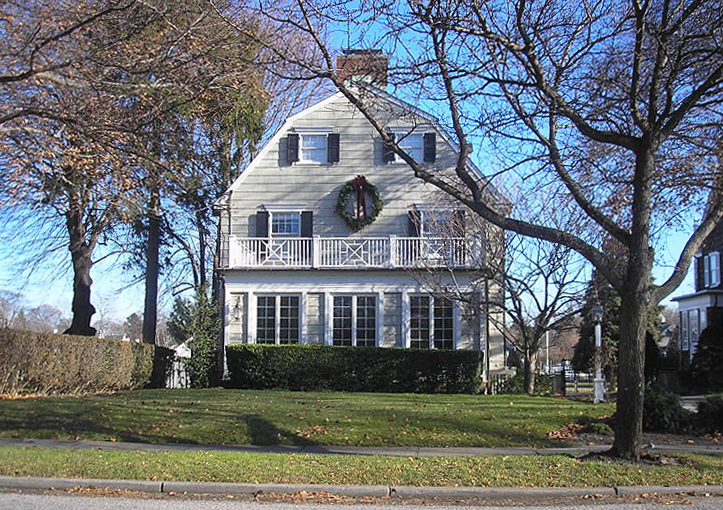
112 Ocean Avenue, Amityville, New York, United States (Source: Wikimedia Commons)
The mass murder, subsequent (alleged) hauntings, and the house at the center of the events gained broader attention in Jay Anson’s book, The Amityville Horror, which is based on the months that the Lutz family spent in the disreputable home. The book was followed by a 1979 film adaptation and sequels. Today, the Lutzs’ accounts of spooky experiences are met with skepticism, with many suggesting they were a hoax. Still, rumors about the house’s past have continued to churn to this day, including that the structure was built over a Shinnecock burial ground, and that a previous resident of the home, John Ketchum, was a Satan worshipper. Neither of these claims have been verified.
Regardless of what may or may not have scared away the Lutz family, 112 Ocean Avenue has had many more residents, undergone renovations, and is occupied today. Records show that the home was last purchased in 2016 and sold for $850,000. No owners subsequent to the Lutz family have reported paranormal happenings.
H.H. Holmes: The Murder Castle
When it comes to serial killers, the names Ted Bundy or Jack the Ripper are more likely to come to mind than H.H. Holmes, born Herman W. Mudgett (he changed his name for reasons that aren’t quite clear). But, in the 19th century, Holmes may have been responsible for more murders than both Jack and Bundy combined.
Early in his life, Holmes, who was said to have an anxious disposition, developed a fascination with human anatomy and pursued the study of medicine at the University of Michigan. In addition to having a fondness for dissecting bodies, he became a grave robber, selling cadavers to medical schools, and also sometimes using them to commit insurance fraud. It’s difficult to determine when Holmes actually began killing, but historians have found that he left behind a cloud of suspicion everywhere he went.
Though Holmes was married with a child, he abandoned his family in 1885, relocating to Chicago. Holmes took over a pharmacy business and had a three-story building constructed nearby on West 63rd Street. The building’s substantial size – it extended a full block – earned the nickname of “the Holmes castle” within the community. That's where the Holmes saga truly began.
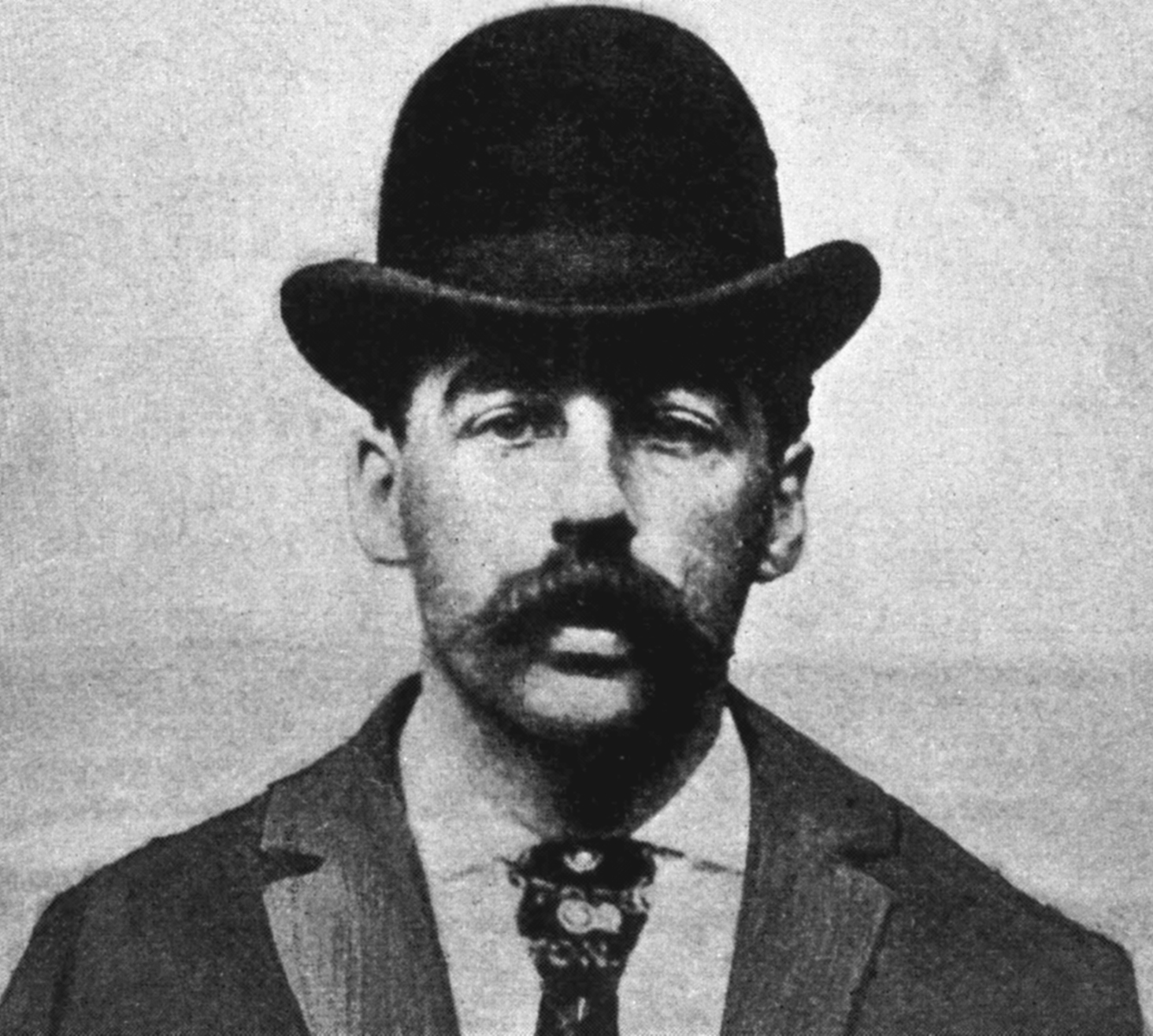
Herman Webster Mudgett (1861–1896), better known under the alias of Dr. Henry Howard Holmes (Source: Wikimedia Commons)
Holmes has long been associated with the Chicago World’s Fair (in part because of Erik Larson’s book Devil in the White City), a glittering spectacle that took place in 1893. It’s believed that the influx of tourists may have supplied Holmes with his victims – mostly women he invited to stay at the castle or those looking for employment.
Despite what we now know about Holmes, it was his penchant for fraud that exposed his other proclivities. Holmes had paired up with associate Benjamin Pitezel and his wife, Carrie, for another money-making maneuver. Benjamin would fake his own death, Holmes would supply the cadaver, and all three would collect on insurance money. Only, Holmes murdered Benjamin with intent to collect all of the insurance money. He also murdered three of the Pitezel children, likely in an effort to silence potential witnesses to the fraud scheme. Their bodies were located in a cellar in Toronto where Holmes had been renting a house.
Widowed and suffering the loss of the children, Carrie confessed to police her own role in the scheme, and Holmes was taken into custody. After entering Holmes’s castle to further investigate, police were horrified to learn that Holmes had constructed a labyrinth of depravity, complete with gas chambers, trapdoors, and chutes for dispatching bodies into a makeshift crematorium.
Or so the story goes.
In Adam Selzer’s The True Story of the White City Devil, he exposes numerous falsehoods surrounding Holmes that have stood the test of time. For example, Holmes's only confirmed victims were the Pitezals, his ex-wife Minnie Williams and her sister Nannie, his mistress Julia Connor and her daughter Pearl, and Emeline Cigrand, a woman he hired as a stenographer. “The legend of the Devil in the White City,” Selzer writes, “is effectively a new American tall tale – and, like all the best tall tales, it sprang from a kernel of truth.”
There’s no doubt that Holmes was a murderer, and that his methods likely included bludgeoning, suffocation, and chloroform poisoning. But the “murder castle” wasn’t quite the chamber of horrors history chocks it up to be. It did have a somewhat unusual design, including a hidden staircase, an anteroom between the first and second floors, and a trap door. Those who constructed the building, however, were aware of these oddities, and the hidden space was likely used to hide stolen furniture more often than bodies.
Holmes had a habit of launching dubious business ventures. In one case, he devised what he called a “gas generator,” which he claimed was capable of turning water into gas. This might be why the myth of the gas chambers originated. It’s possible that Holmes burned victims in a factory he created for a glass-bending enterprise, which could explain why more corpses weren't located.
Holmes confessed to killing 27 people, but he was a bonafide compulsive liar, and several of his supposed victims ended up being alive. The suggestion that Holmes killed up to 200 people likely stemmed from the era’s yellow journalism and a book published in 1940, Gem of the Prairie, in which author Herbert Asbury fanned the flames of rumor and speculation.
So, did Holmes kill 27 people? Two hundred? The truth, as is the case with so many things, is likely somewhere in the middle.
Holmes’s great-great-grandson asserts that his distant relative and Jack the Ripper were one and the same. Many have questioned his argument, particularly since DNA has linked a different suspect to the killings.
Holmes was hanged at the age of 34 on May 7, 1896, for the murder of Benjamin Pitezel. His other victims, however many there actually were, never received justice.
In 1895, shortly after Holmes’s arrest, arsonists set fire to the murder castle. It survived the assault, was repaired, and then converted into a storage space before being torn down in 1938. Now in that spot stands the Englewood Post Office building. It’s a bit of an anticlimactic afterlife for a notorious murder house.
But sometimes, a house is just a house (or post office as the case may be).
More often than not, a murder house goes on to hold new, cherished memories and banal moments for its next generation of residents. As physicists tell us, and an unexpected comfort for us all, is this: Perhaps energy remaining in the wake of pain, suffering, and injustice really can be, in fact, transformed.
Ω
Matia Query is a freelance writer and the editor of BookLife, the indie author wing of Publishers Weekly. She lives in New York’s Hudson Valley.
Title Image: Adobe Stock
